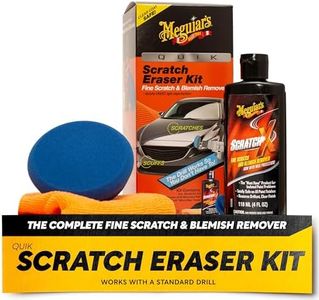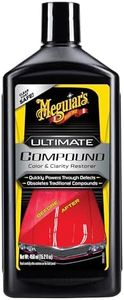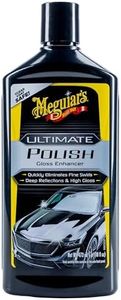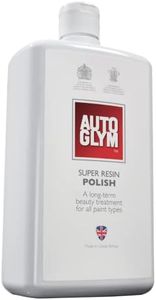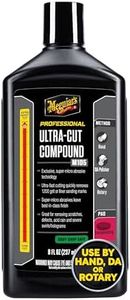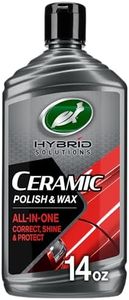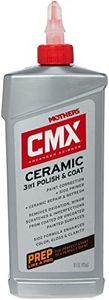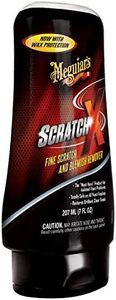We Use CookiesWe use cookies to enhance the security, performance,
functionality and for analytical and promotional activities. By continuing to browse this site you
are agreeing to our privacy policy
10 Best Car Polishes
From leading brands and best sellers available on the web.Buying Guide for the Best Car Polishes
Choosing the right car polish can make a big difference in how your vehicle looks and how well its paint is protected. Car polish is designed to restore shine, smooth out minor imperfections, and prepare your car’s surface for waxing or sealing. The best approach is to consider what your car’s paint needs – are you dealing with blemishes and dullness, or do you just want to maintain a great shine? Understanding the key specifications will help you pick a polish that best suits your car and your level of experience.Type (Abrasive vs. Non-Abrasive)The type of car polish, whether abrasive or non-abrasive, tells you how it works on your paint. Abrasive polishes gently remove a very fine layer of paint or clear coat to smooth out scratches and oxidation, while non-abrasive polishes add shine without cutting into the paint. If your car’s surface has visible swirls, light scratches, or dullness, a mild abrasive polish can help restore the finish. For regular shine maintenance on a well-kept finish, non-abrasive or finishing polishes are usually enough. The right choice depends on how much correction your paint needs: use abrasive for repairs and non-abrasive for shine.
Application Method (Manual vs. Machine)Car polishes can be designed for manual (hand) application or for use with polishing machines. Hand application is best if you’re working on small areas or don’t have experience with machines—it's easy to control and safer for beginners. Polishes made for machine use typically work faster and more effectively on larger blemishes, but they require a polishing tool and a bit more skill. If you like doing your own detailing and want precision, hand application is a good bet. If you need to correct bigger issues or want to save time, consider polishes designed for machine use, but always follow safety instructions.
Finish Type (Gloss vs. Matte)The finish type refers to the look the polish leaves on your paint. Most car polishes are made to enhance gloss and make your paint shiny and reflective, while some are specially formulated for matte finishes to maintain their unique non-shiny appearance. If your car has glossy paint, look for a polish that promises a deep shine. For matte or satin finishes, choose a product explicitly made for those surfaces—using a gloss polish on matte paint can ruin its appearance. Your paint finish guides this choice: match the polish finish to your car’s paint style.
Protection LevelSome car polishes also provide added protection, such as including waxes or sealants that help shield the paint from sun, dirt, and water. Others are just for cleaning and shining, requiring you to apply a separate wax afterward. If you want a simple, one-step process or need extra protection, look for polishes with built-in protectants. If you prefer to use dedicated products for each step, a pure polish might be the better pick. Think about how much time and effort you want to spend, and how exposed your car is to harsh elements.
Ease of UseEase of use refers to how simple it is to apply and remove the polish, and how forgiving it is if you’re not experienced. Some formulas are very user-friendly and wipe off without much effort, while others require more technique or time to get the best results. If you’re new to car polishing or want a quick, hassle-free job, choose a product specifically described as easy to use or suitable for beginners. If you’re more experienced or have specific flaws to correct, the ease of use might be less important than performance.
